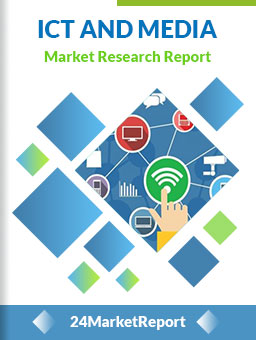Cognitive security applies artificial intelligence techniques along with machine learning to uncover new patterns. It analyzes security-related structured and unstructured data to understand, reason, and learn about constantly evolving threats as well as build security instincts and expertise for analysts at a faster scale and with high accuracy.
Cognitive Security Market aims to provide a comprehensive presentation of the global market for Cognitive Security, with both quantitative and qualitative analysis, to help readers develop business/growth strategies, assess the market competitive situation, analyze their position in the current marketplace, and make informed business decisions regarding Cognitive Security. Cognitive Security Market contains market size and forecasts of Cognitive Security in global, including the following market information:
- Global Cognitive Security Market Revenue, 2018-2023, 2024-2029, ($ millions)
Global top five companies in 2022 (%)
The global Cognitive Security market was valued at US$ 3692.7 million in 2022 and is projected to reach US$ 13010 million by 2029, at a CAGR of 19.7% during the forecast period. The influence of COVID-19 and the Russia-Ukraine War were considered while estimating market sizes.
The North Americas will be the major revenue contributor to the market throughout the forecast period. The market witnesses? steady growth in this region due to the presence of numerous established players headquartered in the North Americas. Also, industries such as banking and financial, healthcare, and retail are experiencing increasing number of cyberattacks.
We surveyed the Cognitive Security companies, and industry experts on this industry, involving the revenue, demand, product type, recent developments and plans, industry trends, drivers, challenges, obstacles, and potential risks.
Total Market by Segment:
Global Cognitive Security Market, by Type, 2018-2023, 2024-2029 ($ millions)
Global Cognitive Security Market Segment Percentages, by Type, 2022 (%)
- Physical Security
- Cyber Security
- Network Security
- Cloud Security
- Application Security
- Endpoint Security
Global Cognitive Security Market, by Application, 2018-2023, 2024-2029 ($ millions)
Global Cognitive Security Market Segment Percentages, by Application, 2022 (%)
- BFSI
- Healthcare
- Retail
- ICT
- Government
- Others
Global Cognitive Security Market, By Region and Country, 2018-2023, 2024-2029 ($ Millions)
Global Cognitive Security Market Segment Percentages, By Region and Country, 2022 (%)
- North America
- US
- Canada
- Mexico
- Europe
- Germany
- France
- U.K.
- Italy
- Russia
- Nordic Countries
- Benelux
- Rest of Europe
- Asia
- China
- Japan
- South Korea
- Southeast Asia
- India
- Rest of Asia
- South America
- Brazil
- Argentina
- Rest of South America
- Middle East & Africa
- Turkey
- Israel
- Saudi Arabia
- UAE
- Rest of Middle East & Africa
- Competitor Analysis
- The report also provides analysis of leading market participants including:
- Key companies Cognitive Security revenues in global market, 2018-2023 (estimated), ($ millions)
- Key companies Cognitive Security revenues share in global market, 2022 (%)
- Further, the report presents profiles of competitors in the market, key players include:
- IBM
- Intel
- Symantec
- Dell
- Cisco
- Check Point Software Technologies
- Broadcom
- Google
- Sift Science
- Feedzai
- SparkCognition
- Cybraics
- Demisto
- XTN
- ThreatMetrix
- LogRhythm
- High-Tech Bridge
- Deep Instinct
- DarKTrace
- Cylance
- McAfee
- Outline of Major Chapters:
- Chapter 1: Introduces the definition of Cognitive Security, market overview.
- Chapter 2: Global Cognitive Security market size in revenue.
- Chapter 3: Detailed analysis of Cognitive Security company competitive landscape, revenue and market share, latest development plan, merger, and acquisition information, etc.
- Chapter 4: Provides the analysis of various market segments by type, covering the market size and development potential of each market segment, to help readers find the blue ocean market in different market segments.
- Chapter 5: Provides the analysis of various market segments by application, covering the market size and development potential of each market segment, to help readers find the blue ocean market in different downstream markets.
- Chapter 6: Sales of Cognitive Security in regional level and country level. It provides a quantitative analysis of the market size and development potential of each region and its main countries and introduces the market development, future development prospects, market space of each country in the world.
- Chapter 7: Provides profiles of key players, introducing the basic situation of the main companies in the market in detail, including product sales, revenue, price, gross margin, product introduction, recent development, etc.
- Chapter 8: The main points and conclusions of the report.






 Industry Market Size
Industry Market Size SWOT Analysis
SWOT Analysis Industry Major Players
Industry Major Players Revenue Forecasts
Revenue Forecasts Historical and Forecast Growth
Historical and Forecast Growth Profitability Analysis
Profitability Analysis
























